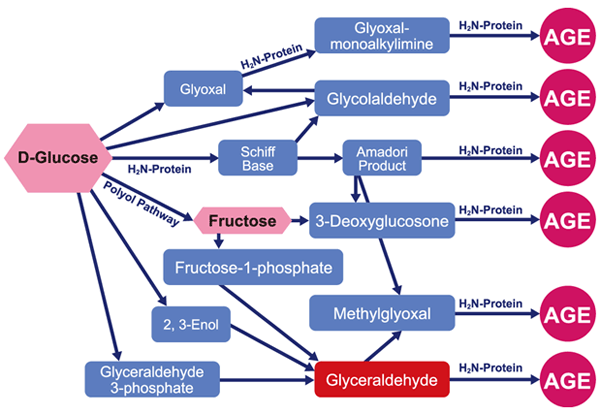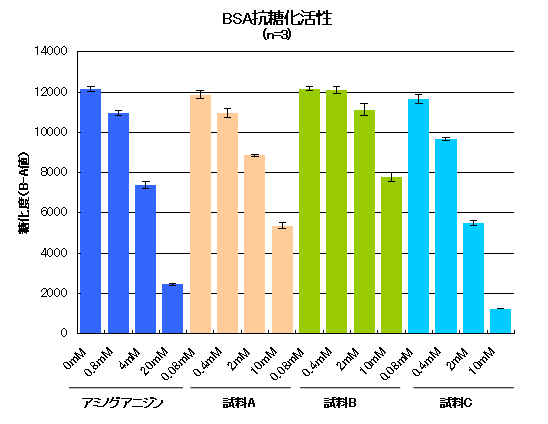Saccharides are essential nutrients for life activities, but on the other hand, modification of lysine and arginine residues of proteins in vivo to form cross-links changes the three-dimensional structure of proteins, which can greatly affect their activity and physical properties. is known. This reaction is called the glycation reaction (Glycation) or the Maillard reaction, and through the early reaction in which Amadori rearrangement products are formed, and reactions such as oxidation, dehydration, and condensation, advanced glycation end-products (AGEs) are formed. can be divided into late reactions.
In recent years, it has been reported that AGEs are produced in vivo not only from glucose, but also from metabolic intermediates, degradation products, and Maillard reaction intermediates of glucose. It has been reported that AGEs derived from glyceraldehyde derived from are strongly involved in the onset and progression of diseases.

figure. Generation pathway of AGEs in vivo

